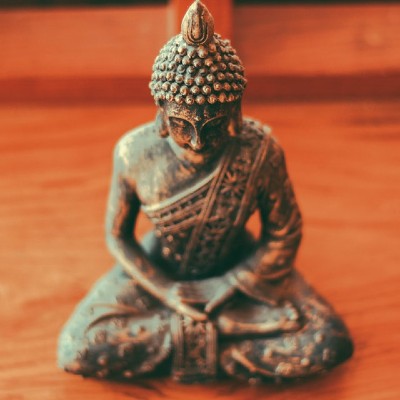There’s no hidin’ place down here
You know, there’s no hidin’ place down here
I went to the rock to hide my face
But the rock cried out, no, no hiding place down here
“There’s No Hiding Place Down Here”
traditional African-American spiritual, originally collected in 1907 and first printed in 1915
My first entry into the practice of mindfulness seemed an invitation to experience mental anguish and pain. In those early days, the encouragement to “be with what is” was an opportunity to “be with” poverty, violence, and despair once I left sangha. Even now, I am curious as to why I continued to walk, get two trains, a bus, and walk some more to an area that was stark in its wealth and privilege.
I believe the spirit that guided me was finding that past awareness I believed, I trusted there was a path to freedom. The freedom that would allow me to be a full human being able to make choices regardless of the machinations of a society that had left me under-resourced both economically and spiritually. For me, it was through exploring the heart practices of the Four Brahmaviharas that empowered my coming and going.
Loving-kindness (metta), for which I prefer the translation of universal friendliness, moved my attention from “them” to me. The fight of showing my worthiness did the exact opposite. The internal and external desire to prove myself proved exhausting and ineffective. Metta does not oppose, it embraces. This practice affirmed my worthiness and the worthiness of others. It proved to be an affirmation of my agency that came with acknowledging the truth of my existence and the existence of others. This is not an easy practice. My initial practice of “may I be well, happy, healthy, etc.” caused me to experience strong body reactions.
Compassion (karuna), allowed me to be with others rather than having sympathy for “them.” This practice further removed the delusion of separation and allowed me to be aware that I could meet people for whom there seemed to be no connection or possibility of connection in the heartbreak of being human. There would be no tradeoff of authenticity that would be required.
Empathetic joy (mudita), provided chances to celebrate without the cloud of jealousy. The joy of others, became mine and further elevated my spirit and expanded my own ability to see there is no zero-sum game, wherein celebration of one can be the loss of others. Like metta practice, the cultivation of mudita has widened my ability to be with my own joy.
Finally, equanimity (upekkha), was not a way of not caring for others, but gave me a blueprint to be present to the whole being of another person without the need to have them interact with my internal script, and when they did not follow my script, I would have an opportunity to be disappointed with them. The practice connected me to the wisdom of my lineage, my enslaved ancestors, who saw the world unadorned its intention to deny their humanity and said, “this too” and smiled.
These teachings of the heart have often seemed contradictory. Strength is founded in the ability to be soft, meeting a world intent on dehumanization is met with connecting to my own heart more and more. However, it is a contradiction that supports my heart and my freedom. It allows me to accept myself in all my complexity, and to celebrate the complexity of other human beings without judgment.
Ayesha Ali is an affiliate teacher with IMCW, facilitator of Heartwidth Sangha and co-facilitator of Mighty Real Sangha, co-founder of the Heart Refuge Mindfulness Community for People of Color, and the instigator of The Smile Rebellion. Her bio and teaching schedule can be found on her Teacher page.



